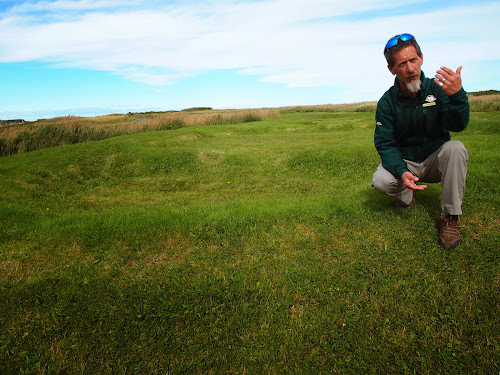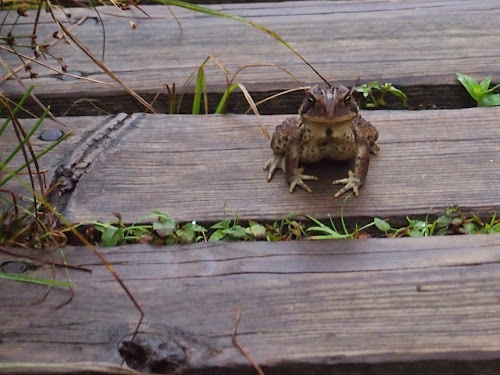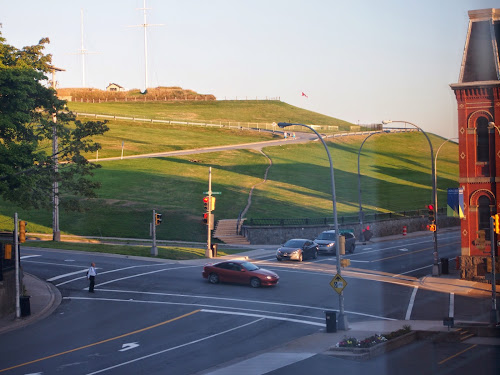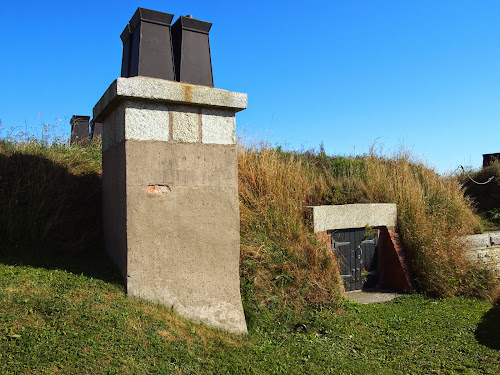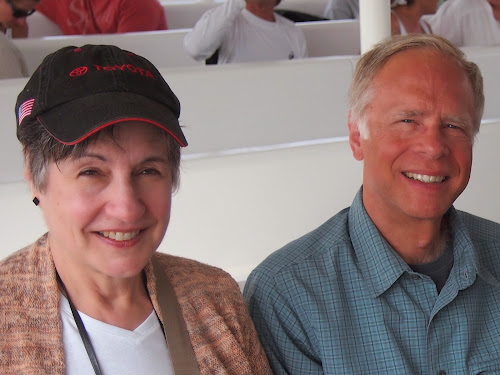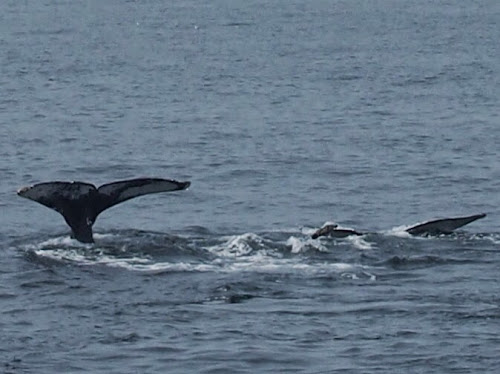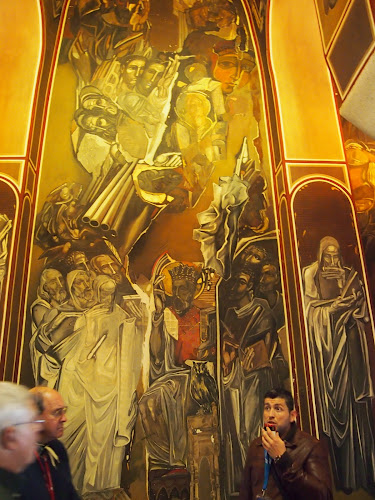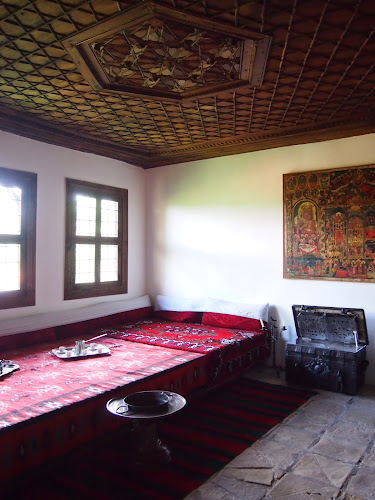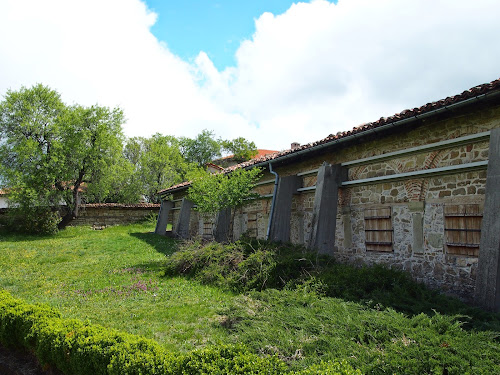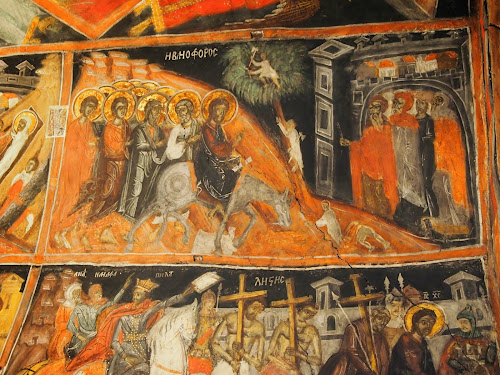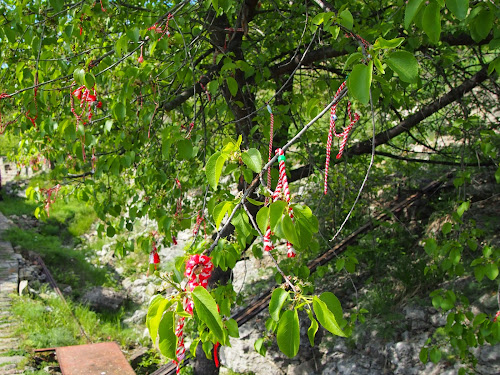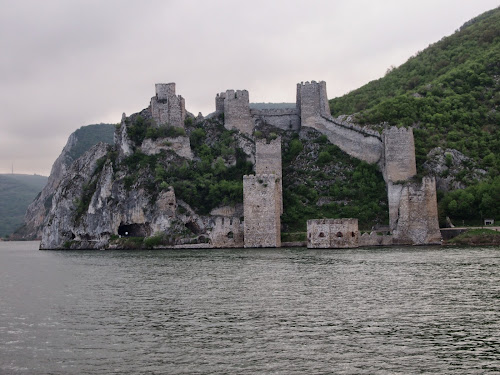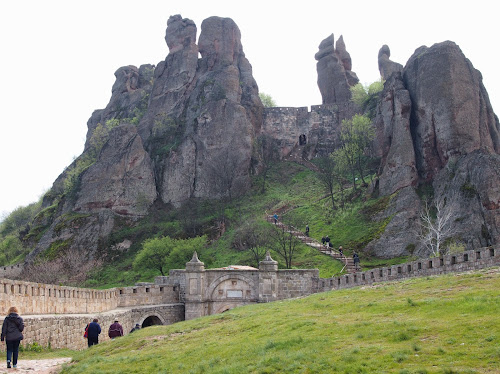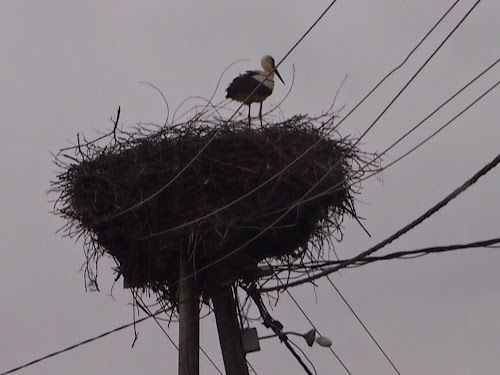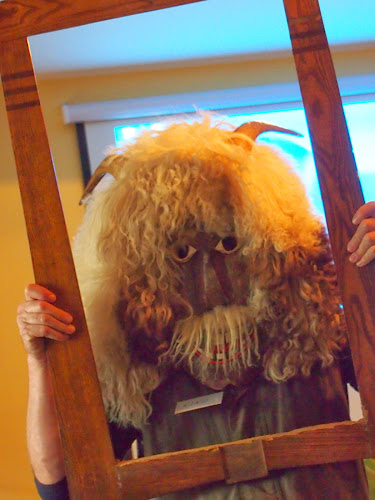It was this spot that brought us so far north. Here is where Leif Erikson established a base camp, occupied for ten years in a fifteen year period around 1000 AD. He wanted to gather the natural bounty available further south in “Vinland” (most likely current New Brunswick) to support the colonies in western Greenland. Here is the oldest documented spot – with tangible human artifacts – occupied both by Europeans and Native Americans, where the humans who left Africa heading east ended up at the same place as those heading north and west, completing a circle.
After the initial archeological work, Parks Canada took over and developed a National Historical Site (and UNESCO World Heritage Site) that includes both a museum with the artifacts recovered and a reconstruction of a number of the “Viking” huts. The ridges in the field are, of course, the dig site and one of the huts is directly below.
We know the L’Anse aux Meadow (yes, it’s butchered French) site was a base camp, rather than an attempt at settlement because the buildings are all close together, rather than spaced out into farmsteads such as the settlements in both eastern and western Greenland. The huts themselves are quite spacious and extremely well insulated with wall construction of peat, birch bark and gravel, giving them an R rating of 100. The only detail as to which the archeologists are uncertain is the construction of the smoke holes, although we do know that the huts were very smoky because the life expectancy of women (who spent a lot more of their time inside) was less than that of men and their second leading cause of death (after childbirth) was lung disease. In the reconstructions they’ve compromised and burn propane so that the reenactors have safe working conditions.
The Norse around the year 1000 were a relatively sophisticated people with complex social and religious systems (including an opportunistic nod to Christianity) and some technology. At L’Anse aux Meadow they smelted iron using bog iron and produced nails used to repair their boats. In Europe they were highly effective as both raiders and traders, ranging as far as the Middle East and Africa. And, we were told by our Norse/French Canadian guide, “viking” is a verb for raiding, not a noun. In fact, the iconic image of Viking helmets with horns was apparently an invention of propagandists whipping up support for effective defenses against the Norse. Only one iron Norse helmet was ever found – and it lacked horns.


